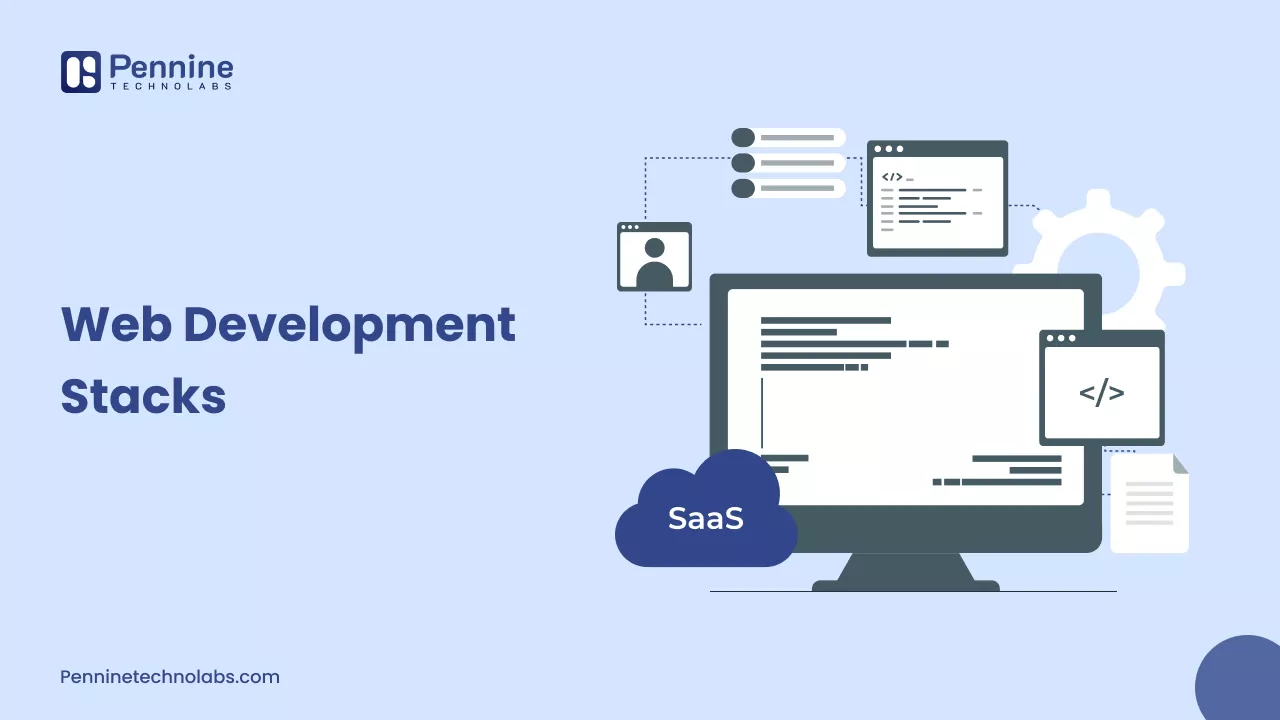Quick Summary: Node.JS is a fast, scalable server-side runtime that allows developers to use JavaScript for backend development. This blog covers its architecture, asynchronous nature, setup phase and best practices. Why top companies trust Node.JS and how it shapes the future of modern web applications.
In 2025, Node.js has grown to become one of the most important tools for building websites and apps. Many people choose Node.js as their server technology, whether they are making a simple API or a real-time app that gets a lot of traffic.
Node.js is the best combination to deal with asynchronous network and database calls. It makes the coding easy and sparks up the server with a couple of commands.
What is Node.js?
Node.js is a runtime environment that allows developers to run JavaScript on the server side. Traditionally, JavaScript was used only for client-side scripting in web browsers. Node.js replaced that by enabling JavaScript to work outside the browser, and developers can create backend applications on a full stack using a single programming language in both frontend and backend development.
Node.js development is fast, light, and great for data-heavy apps that need to handle several connections at once. It was built on Google’s high-performance V8 engine.
Node.js Architecture: Prerequisites and Core Concepts
To understand how Node.js development works, it’s important to grasp a few core concepts and prerequisites.
JavaScript Fundamentals
Website developers know the foundations of JavaScript, such as functions, objects, callbacks, and closures, before they start working with Node.js. You need to know how to write and use JavaScript because Node.js is built on it.
Asynchronous Programming
Node.js is built around the idea of non-blocking I/O. That means instead of waiting for one task to finish before starting another, it starts several tasks altogether and handles their results when available. It is important to understand Promises, Callbacks, and async/await for writing skilled Node.js asynchronous code.
Basic HTTP Concepts
Since Node.js is often used to create a web server and API, developers know how HTTP works, status codes, methods (GET, POST, PUT, DELETE), request headers, and response structures. These fundamentals play an important role when using Node.js to create a server application.
Single-Threaded Event Loop
Unlike traditional server models, which spawn new threads per request, Node.js operates on the same thread using non-blocking I/O calls. This allows it to handle thousands of concurrent requests with minimal resource use.
Event Loop and Callback
Node.js uses an event loop to manage and queue events. It registers the callback and defers them to execute after the completion of the previous tasks, causing the app to become non-blocking.
Libuv Library
A C-based library that provides Node.js with an asynchronous layer for networking, file systems, and timers for operations.
V8 engine
It is a JavaScript engine developed by Google that compiles and executes JavaScript code at lightning speed.
Module
Node.js uses CommonJS modules to manage and load different parts of an application, which ensures clean separation of logic.
Best Practices to Follow in Node.js
To make efficient and maintainable web applications, Node.js developers must take into account the following best practices:
Use an Asynchronous API to avoid blocking the event loop
- Structure your code with modules to separate logic and system
- Use the environment variable to manage sensitive data and configuration
- Handle errors using a centralized error handler and try-catch blocks
- Avoid blocked operations, especially in high-travel applications
- Secure your app with input validation, rate-limited, and safe headers
- Use middleware while working with a framework like Express for better code readability
- Monitor your app using devices like PM2 for process management and automatic restarts
- Apply caching for repeated queries or static content
- Log everything from errors to request activity using logging tools such as Winston or Banyan
Why Choose Node.js?
Choosing the right backend technology can affect the success of your entire project. Why Node.js stands out:
1. Fast Performance
Node.js V8 is powered by the engine, which compiles JavaScript into machine code. This rapid execution leads to time, causing Node.js to become a great option for apps that demand speed and accountability.
2. Full Stack JavaScript
Node.js allows you to use JavaScript for both front-end and back-end development. This improves cooperation between integration teams and makes the codebase more consistent and easier to manage.
3. Real-time capacity
Applications that require real-time communication, such as chat apps, gaming platforms, or collaborative equipment, greatly benefited from the Node.js event-powered models and WebSocket support.
4. Scalable and Lightweight Node.
JavaScript can handle multiple requests at the same time without using a lot of resources. Its architecture allows for horizontal scaling, which means you can simply add features to your application on the server without having to rewrite the fundamental functionality.
5. Rich ecosystem
There are over a million open-source packages in the NPM ecosystem, ranging from small tools to advanced libraries. You can build on a module that has been tested well in the ecosystem.
6. Community and support
With a large and active developer community, support is always available through documentation, forums, and contributors who develop the stage.
7. Ideal for API and Microservices
Node.js is great for developing RESTful APIs and microservices-based architectures, which are essential for cloud-native apps nowadays.
8. Backed by Enterprise Usage
Companies like Netflix, LinkedIn, Uber, PayPal, and Walmart have used Node.js on a large scale. That level of faith reflects its maturity, security, and the ability to support high-demand systems.
At Pennine Technolabs, we take advantage of the full potential of Node.js to provide efficient back-end solutions in industries including e-commerce, SaaS, and real-time applications.
The Future of Node.js
Node.js is well-developed for future technologies. Increase in edge computing, serverless functions, and extending real-time data processing completely non-blocking node.js with an event-powered nature.
Its growing integration with TypeScript, better performance in new releases, and compatibility with AI tools and container environments strengthen its place in modern development stacks.
As more companies shift to microservices and event-based systems, the demand for Node.js is expected to increase.
Conclusion
Node.js is more than just one backend tool. It is a performance, developer-friendly environment that fits well in modern software development. Whether you`re creating a small tool or scaling to a complex platform, Node.js provides the speed, flexibility, and efficiency required to give real results.
Pennine Technolabs brings deep expertise in Node.js development. From API-driven platforms to scalable real-time applications, we craft backend systems that perform and scale.
FAQs Node.js Development
What is Node.js mainly used for?
Node.js is mainly used to create chat apps and microservices architecture, such as scalable web applications, REST API, and Real-Time Tools.
Is Node.js good for beginners?
Yes, Node.js is beginner-friendly, especially for those who already know JavaScript. Its community, documentation, and modular structure are easy to introduce.
Is Node.js a frontend or backend?
Node.js is a backend runtime environment that runs JavaScript on the server side. However, it enables full-stack JavaScript development when combined with frontend libraries like React.
Why is Node.js better than other backend frameworks?
Node.js is lightweight, fast, and non-blocking. It supports real-time applications, handles multiple connections efficiently, and offers a rich ecosystem through npm.
How is Node.js different from JavaScript?
JavaScript is a programming language. Node.js is a runtime that allows JavaScript to run on the server, not just browser.



